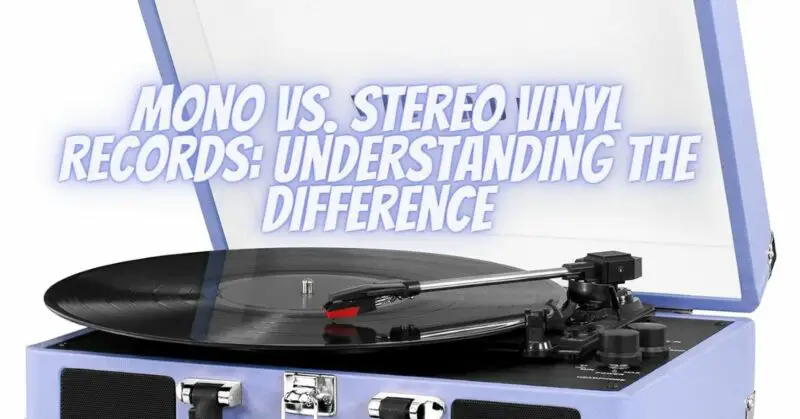Vinyl records have been a beloved format for music enthusiasts for decades. One of the fundamental distinctions in vinyl records is between mono and stereo recordings. Understanding the difference between the two can enhance your appreciation of music on vinyl. In this article, we will explore the key characteristics and historical context of mono and stereo vinyl records.
Mono Vinyl Records:
- Single Sound Channel:
- Mono, short for monophonic, means that all the audio signals are mixed into a single sound channel.
- Mono records have only one groove in which the entire musical content is inscribed.
- Historical Context:
- Mono records were the dominant format for music from the late 1800s until the early 1960s.
- They were the standard for early jazz, blues, rock ‘n’ roll, and classical recordings.
- Sound Characteristics:
- Mono records are characterized by a centered sound image.
- The sound appears to emanate from a single point between the speakers.
- They can offer a warm and cohesive sound, making them a preferred choice for some audiophiles and collectors.
- Compatibility:
- Mono records can be played on both mono and stereo turntables without any issues.
- Some collectors prefer mono versions of certain albums for their historical authenticity.
Stereo Vinyl Records:
- Multiple Sound Channels:
- Stereo, short for stereophonic, involves the use of multiple sound channels to create a three-dimensional audio experience.
- Stereo records have two grooves, one for the left channel and one for the right.
- Historical Context:
- Stereo records gained popularity in the early 1960s and became the standard for most music recordings.
- They allowed for a more immersive listening experience with a sense of space and separation between instruments.
- Sound Characteristics:
- Stereo records offer a wider and more spatial soundstage.
- Instruments and vocals can be heard from different directions, creating a sense of depth and realism.
- Stereo recordings are often favored for their ability to provide a more detailed and dynamic listening experience.
- Compatibility:
- Stereo records can be played on stereo turntables and most modern audio systems.
- Attempting to play a stereo record on a mono turntable may result in a skewed or distorted sound.
Conclusion
The choice between mono and stereo vinyl records ultimately comes down to personal preference and the specific qualities you seek in your music listening experience. While mono records offer a more straightforward and nostalgic sound, stereo records provide a more immersive and dynamic audio experience. Collectors often consider the historical context and artistic intent when choosing between the two formats. Regardless of your preference, both mono and stereo vinyl records contribute to the rich tapestry of music available on vinyl, each offering a unique way to enjoy your favorite tunes.


